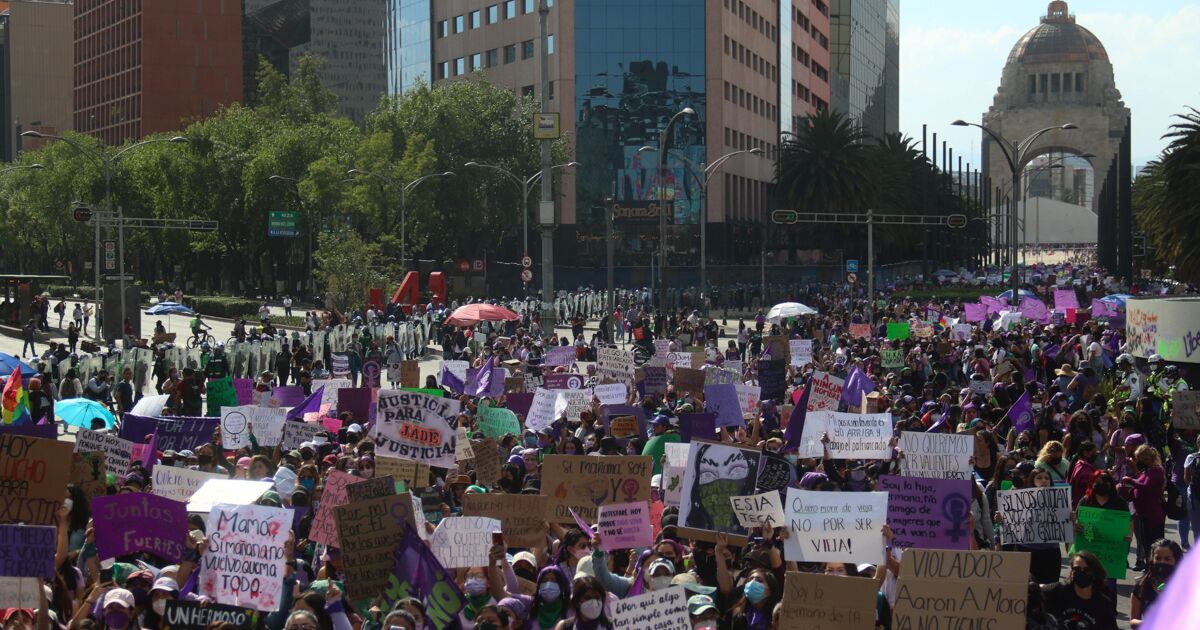Genova Street, in the Zona Rosa, also received waves of people with each train that arrived at the Insurgentes station and was almost empty, as the women headed to the march.
The contingents began their march at 2:00 p.m. on Paseo de la Reforma, while protesters continued to arrive at the Angel and the Monument. With the cry of “He who doesn’t jump is macho!”, girls, adolescents, young people and old women shook Avenida Juárez, as they walked towards the Zócalo.
Two years after the historic 2020 march, shortly before the COVID-19 emergency was declared, women took over the streets with an attendance recognized by the city government of some 75,000 protesters.
Dalia, 60, attended the march from Tlatelolco as she has done without fail for nine years every March 8. “No one is alone, none of the women is alone. We are a lot of sisters and mothers and daughters who are fighting for all of us,” she affirms as her reason for going to march.
She is aware of the antagonism of President Andrés Manuel López Obrador against the feminist movement.
“(It is) a government that represses them, ‘encircles’ them, encapsulates them and says that we are neoliberals and we are paid. I think they would need too many millions of pesos to pay all of us who are demonstrating. We unite because we are women and they kill us They rape us, they abuse us and that must end,” he maintains.
For his part, Daniel, 19, paid for an Uber to get to the demonstration from Ciudad Azteca in the State of Mexico, because when moving in a wheelchair it is difficult to take public transport. “I am convinced that unity is strength and more so in mobilizations of this type. I think that all of us who are here come of our own free will, to go out and fight,” says the young woman.














